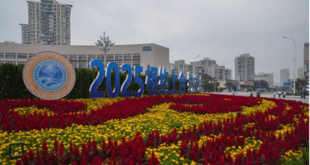Social media has radically transformed the way people engage with politics and geopolitical issues. Platforms such as TikTok, X (formerly known as Twitter), and Instagram have emerged as crucial arenas where political debates unfold, ideologies are shaped, and global issues are framed. The brevity of content, ease of access, and visual appeal have enabled these platforms to reach millions, if not billions, of users globally, altering traditional methods of political engagement. This article explores how these platforms influence political views and shape perceptions of geopolitical events, with a focus on the dynamics that enable them to have such far-reaching effects.
The relationship between social media and politics is not new, but the rise of platforms like TikTok, X, and Instagram has magnified their impact. The speed at which content circulates, the ability to generate viral movements, and the democratic nature of these platforms have all contributed to their power. This article examines the unique features of these platforms that allow them to sway political views and highlights the consequences of their role in shaping public opinion on global issues.
The Digital Era and Political Information Consumption
Political discourse is no longer limited to conventional media such as newspapers, television, or radio. The rise of social media platforms has expanded the scope and nature of political dialogue, democratizing access to information while simultaneously fragmenting it. Whereas traditional media was regulated and often subjected to stringent editorial guidelines, social media is largely decentralized, allowing anyone to share content, sometimes without checks for accuracy or authenticity (Zhuravskaya, Petrova, & Enikolopov, 2020).
A defining feature of social media is the use of algorithms to tailor content to individual users based on their preferences and prior engagements. This personalization of content has major implications for political engagement. By selectively curating content, algorithms often create “echo chambers” where users are repeatedly exposed to similar viewpoints, limiting exposure to diverse political perspectives (Cinelli et al., 2021). As a result, political views become polarized, and consensus on geopolitical issues becomes harder to achieve.
Moreover, the format of these platforms, characterized by brevity and emphasis on visual content, encourages the consumption of bite-sized pieces of information, which are often oversimplified or sensationalized. This can distort complex geopolitical issues, reducing them to digestible narratives that may not capture the nuance of real-world politics.
TikTok: Viral Trends and Political Mobilization
TikTok, a video-sharing platform with more than one billion active users, has swiftly evolved from a medium primarily for entertainment to one with a significant political impact (Abidin, 2020). Its defining feature, the short-form video, allows users to create and share content quickly, making it a potent tool for political communication.
TikTok’s algorithm is notorious for promoting content that is engaging and likely to generate interactions such as likes, shares, and comments. As a result, politically charged videos have the potential to go viral and reach millions of users within hours. During the U.S. 2020 presidential election, TikTok users mobilized en masse to create and share videos supporting their preferred candidates, highlighting key issues like racial justice, healthcare, and climate change (Herrman, 2020). Similarly, TikTok has been used to raise awareness about international issues, including the Israeli-Palestinian conflict and the Hong Kong protests. The ability to blend visual storytelling with political messaging in such a way has redefined political activism, making it more accessible to younger generations who dominate the platform’s user base.
TikTok’s role in shaping public opinion is closely tied to the viral nature of its content. Viral trends, often driven by influencers or charismatic content creators, can shift public discourse almost overnight. This dynamic is particularly significant when it comes to geopolitical issues. For example, during the Russian invasion of Ukraine in 2022, TikTok videos depicting the conflict garnered millions of views. Many of these videos were personal accounts from civilians in Ukraine, providing an emotional and immediate perspective that was hard for traditional media to replicate (Moloney, 2022). While this on-the-ground perspective is invaluable, it also raises questions about the authenticity of information and the potential for misinformation, as it becomes difficult to verify the accuracy of such videos in real-time.
X (Formerly Twitter): A Global Stage for Political Discourse
X, rebranded from Twitter, has long been a prominent platform for political debate. Known for its brevity, originally limited to 140 characters per post, X has fostered concise, direct communication, a feature that resonates in the fast-paced world of politics. Government officials, activists, journalists, and citizens alike use the platform to discuss current events, making X a global stage for real-time political discourse (Jackson & Foucault Welles, 2015). In particular, political leaders such as former U.S. President Donald Trump have harnessed the platform’s direct-to-audience model to bypass traditional media outlets and communicate their messages without mediation.
The unique aspect of X is its ability to spark immediate and widespread reactions to political events. The platform has been pivotal in organizing political movements and protests. The Arab Spring in 2010-2011 serves as a prime example of X’s role in facilitating political change. During the protests across the Middle East and North Africa, X allowed activists to coordinate and share live updates, galvanizing international support for their cause (Tufekci & Wilson, 2012). More recently, the Black Lives Matter (BLM) movement gained global traction through viral hashtags like #BLM, which were used to raise awareness and organize protests worldwide after the killing of George Floyd in 2020 (Ince, Rojas, & Davis, 2017).
Despite its potential to promote democratic engagement, X also poses risks to informed political discourse. The platform’s character limit often leads to oversimplification, reducing nuanced political debates to sound bites. This brevity, coupled with the platform’s viral nature, allows misinformation to spread rapidly, as users tend to share content without verifying its accuracy (Pennycook & Rand, 2018). This phenomenon was particularly evident during the COVID-19 pandemic when misinformation about the virus and vaccines proliferated on X, influencing public opinion and even government responses to the health crisis (Cinelli et al., 2020).
Instagram: Visual Storytelling and Political Influence
Instagram, primarily a photo-sharing platform, has also become an influential space for political discourse. With over one billion active users, Instagram’s visual-centric approach to communication has proven effective in shaping public opinion, particularly among younger demographics (Highfield & Leaver, 2016). Political candidates and activists alike have harnessed Instagram’s ability to present visually compelling narratives that resonate with users emotionally, which can be more persuasive than text-based communication.
A defining feature of Instagram’s political influence is the rise of “infographics” concise, visually appealing images that convey information about political issues, policies, and global events. These infographics are often designed to simplify complex topics, making them more digestible for users who may not be deeply engaged in politics. During the 2020 U.S. elections and the global protests following the death of George Floyd, Instagram infographics played a key role in spreading awareness about systemic racism, voter suppression, and police brutality (Clark, 2020). The shareability of these posts allows political messages to spread rapidly, reaching users who might not otherwise engage with such topics.
Instagram influencers also wield significant power in shaping political views. These users, who often have millions of followers, can influence public opinion by endorsing political candidates, policies, or social movements. For instance, during the 2020 elections, several high-profile influencers used their platforms to encourage voter registration and participation, particularly among younger voters who are typically less likely to vote (Bond, Fariss, Jones, Kramer, Marlow, Settle, & Fowler, 2012). The reach and impact of these influencers are amplified by Instagram’s algorithm, which promotes content based on user engagement, ensuring that politically charged posts are seen by a large audience.
However, like TikTok and X, Instagram is not immune to the spread of misinformation. The platform’s reliance on visual content means that misleading images and videos can go viral, often without proper context or verification. This was evident during the COVID-19 pandemic, where conspiracy theories and false claims about the virus and vaccines spread rapidly through Instagram stories and posts, influencing public perception and behavior (Cinelli et al., 2020).
Misinformation and Echo Chambers
One of the most significant concerns surrounding the political use of social media platforms like TikTok, X, and Instagram is the prevalence of misinformation. The ease with which false information can spread on these platforms is exacerbated by their algorithmic design, which prioritizes engagement over accuracy. As users interact with content that aligns with their preexisting beliefs, they become increasingly isolated in “echo chambers” where dissenting views are rarely encountered. This polarization can have serious consequences for democratic discourse, as individuals become less open to compromise or understanding opposing perspectives (Törnberg, 2018).
Research has shown that misinformation spreads more rapidly and widely than accurate information on social media platforms, often because it is more sensational or emotionally charged (Vosoughi, Roy, & Aral, 2018). This phenomenon was particularly evident during the 2016 U.S. presidential election, where false stories about candidates were shared millions of times on social media, influencing public perception and, potentially, the election outcome (Allcott & Gentzkow, 2017). The ease with which misinformation spreads on TikTok, X, and Instagram poses a significant challenge for policymakers and social media companies alike, as they grapple with how to balance free speech with the need to protect the integrity of political discourse.
Conclusion
Social media platforms like TikTok, X, and Instagram have undeniably reshaped the landscape of political engagement and geopolitical discourse. Their ability to disseminate information rapidly, foster viral movements, and create echo chambers has made them powerful tools for both political mobilization and manipulation. While these platforms have democratized access to political information and allowed marginalized voices to be heard, they have also contributed to the spread of misinformation and political polarization. As these platforms continue to evolve, the challenge will be finding ways to harness their potential for positive political engagement while mitigating the risks associated with their use.
 Geostrategic Media Political Commentary, Analysis, Security, Defense
Geostrategic Media Political Commentary, Analysis, Security, Defense





